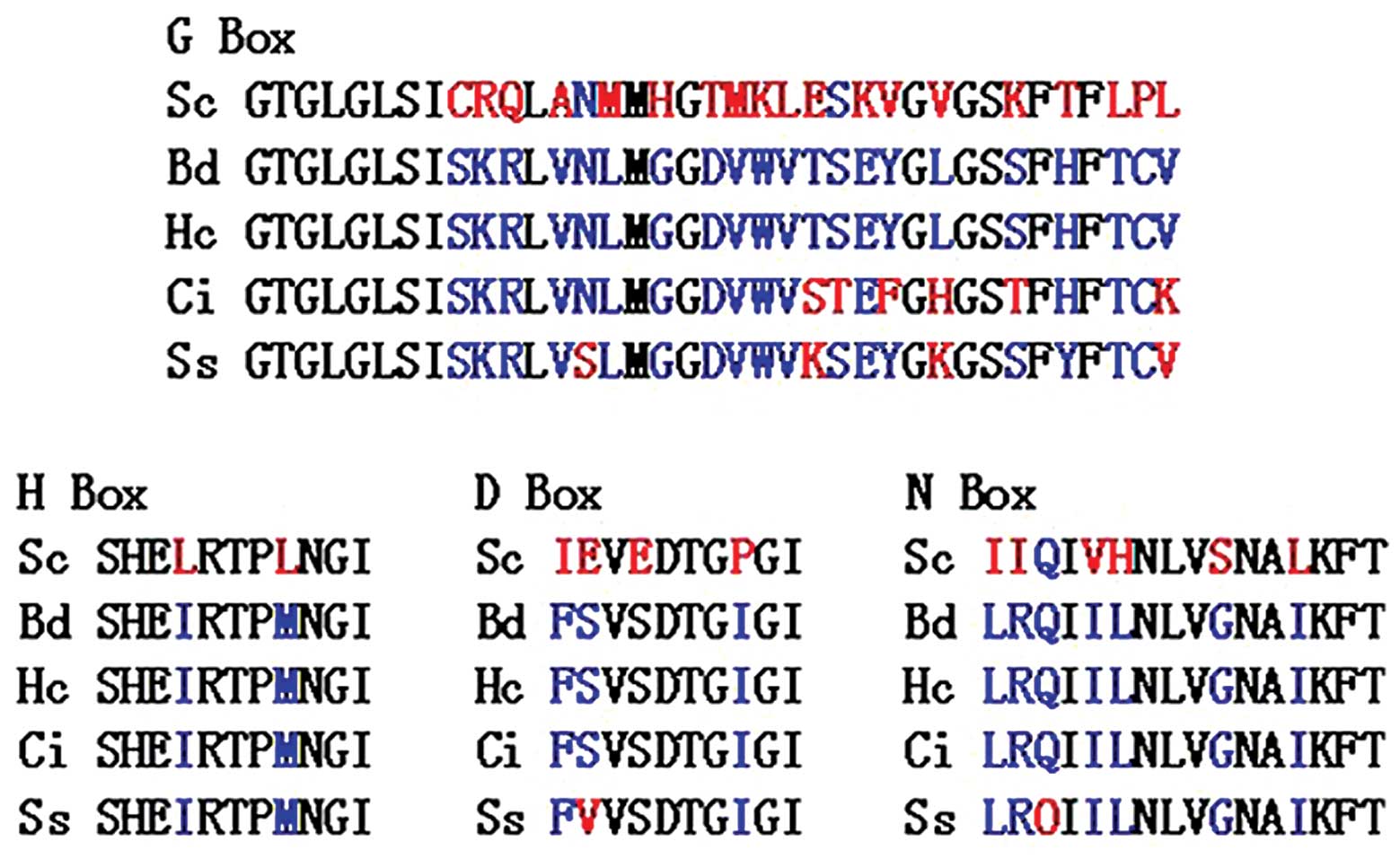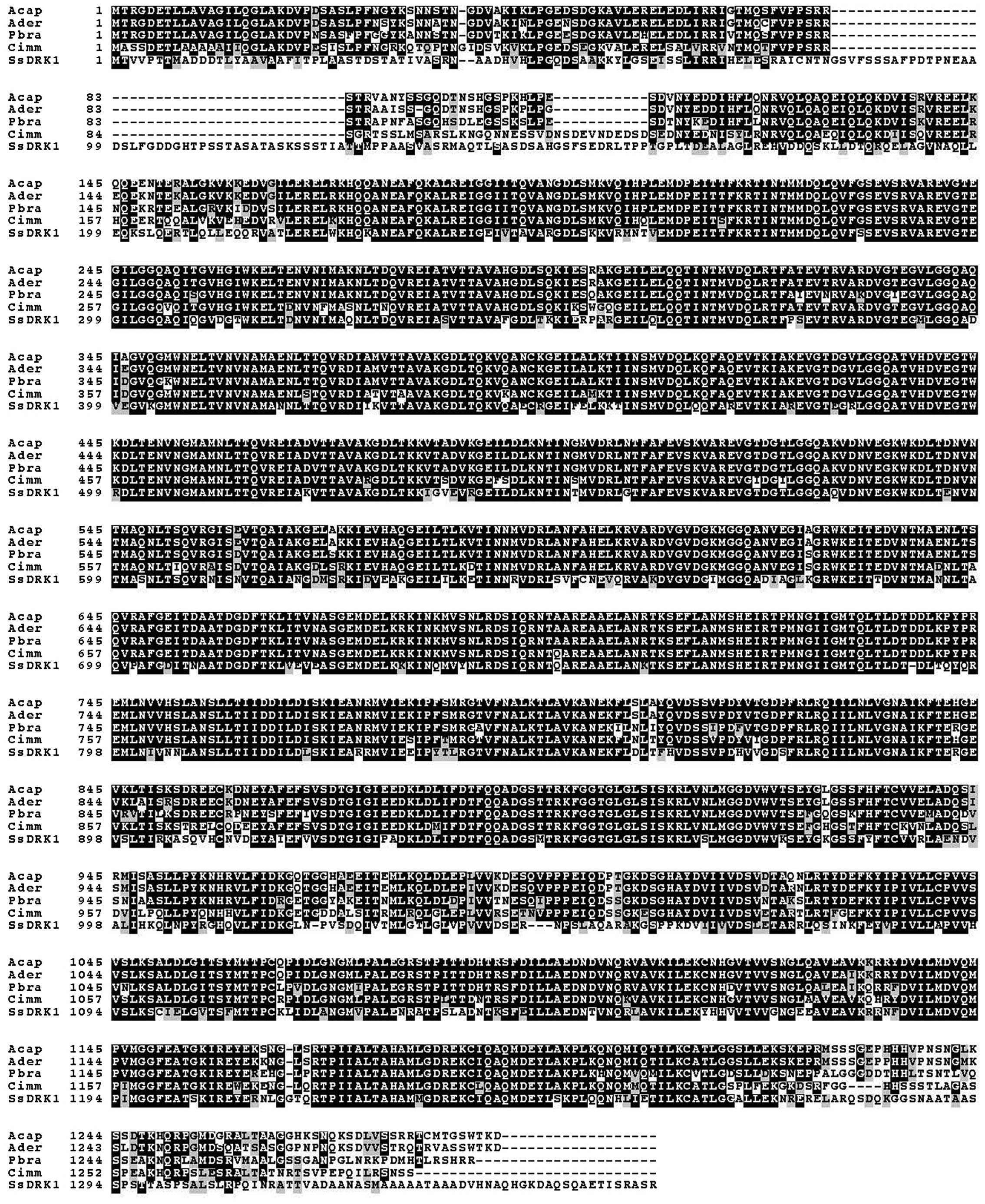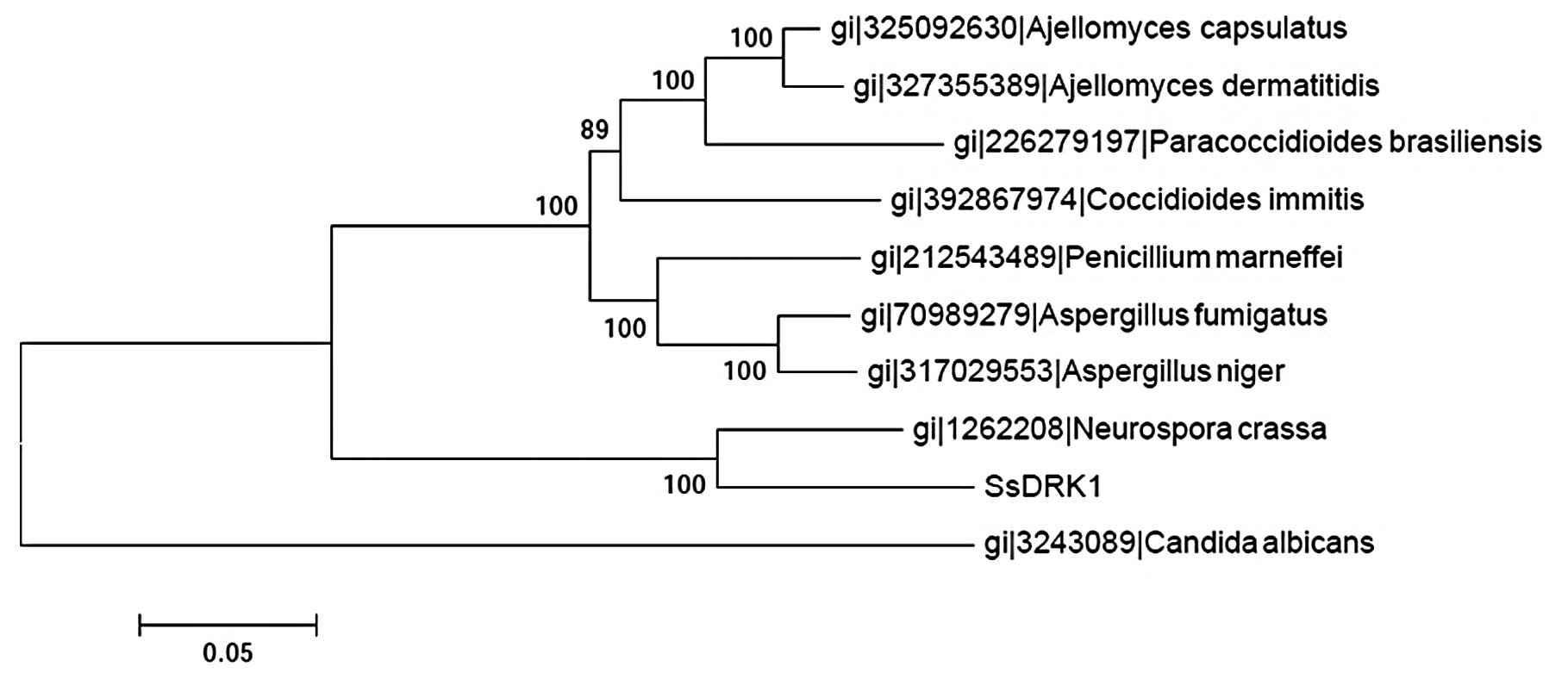Molecular cloning, characterization and differential expression of DRK1 in Sporothrix schenckii
- Authors:
- Binbin Hou
- Zhenying Zhang
- Fangliang Zheng
- Xiaoming Liu
-
View Affiliations
Affiliations: Department of Dermatology, The First Affiliated Hospital of Dalian Medical University, Dalian, Liaoning 116011, P.R. China, Key Laboratory of Animal Resource and Epidemic Disease Prevention, Life Science School of Liaoning University, Shenyang, Liaoning 110036, P.R. China
- Published online on: November 22, 2012 https://doi.org/10.3892/ijmm.2012.1193
-
Pages:
99-104
Abstract
The dimorphism of Sporothrix schenckii (S. schenckii) reflects a developmental switch in morphology and lifestyle that is necessary for virulence. DRK1, a hybrid histidine kinase, functions as a global regulator of dimorphism and virulence in Blastomyces dermatitidis (B. dermatitidis) and Histoplasma capsulatum (H. capsulatum). The partial cDNA sequence of DRK1 of S. schenckii, designated SsDRK1, was obtained using degenerate primers based on the conserved domain of the DRK1 of other fungi. The complete cDNA sequence of SsDRK1 was obtained by 5' and 3' RACE. The full-length cDNA is 4743 bp in size and has an open reading frame (ORF) of 4071 bp, encoding 1356 amino acid residues. The predicted molecular mass of SsDRK1 is 147.3 kDa with an estimated theoretical isoelectric point of 5.46. The deduced amino acid sequence of SsDRK1 shows 65% identity to that of B. dermatitidis. The SsDRK1 was predicted to be a soluble histidine kinase and to contain three parts: sensor domain, linker domain and functional domain. Quantitative real-time RT-PCR revealed that SsDRK1 was more highly expressed in the yeast stage compared with that in the mycelial stage, which indicated that the SsDRK1 may be involved in the dimorphic switch in S. schenckii.
View References
|
1
|
Travassos LR and Lloyd KO: Sporothrix
schenckii and related species of Ceratocystis. Microbiol Rev.
44:683–721. 1980.
|
|
2
|
Guarro J, Gené J and Stchigel AM:
Developments in fungal taxonomy. Clin Microbiol Rev. 12:454–500.
1999.
|
|
3
|
Nemecek JC, Wuthrich M and Klein BS:
Global control of dimorphism and virulence in fungi. Science.
312:583–588. 2006. View Article : Google Scholar : PubMed/NCBI
|
|
4
|
Zhang ZY, Hou BB, Xin Y and Liu XM:
Protein profiling of the dimorphic pathogenic fungus, Sporothrix
schenckii. Mycopathologia. 173:1–11. 2012. View Article : Google Scholar
|
|
5
|
Livak KJ and Schmittgen TD: Analysis of
relative gene expression data using real-time quantitative PCR and
the 2(-Delta Delta C(T)) method. Methods. 25:402–408. 2001.
View Article : Google Scholar : PubMed/NCBI
|
|
6
|
Feng P, Xie Z, Sun J, Zhang J, Li X, Lu C
and Xi L: Molecular cloning, characterization and expression of
PmRsr1, a Ras-related gene from yeast form of Penicillium
marneffei. Mol Biol Rep. 37:3533–3540. 2010. View Article : Google Scholar : PubMed/NCBI
|
|
7
|
Aquino-Piñero E and Rodríguez-del Valle N:
Characterization of a protein kinase C gene in Sporothrix
schenckii and its expression during the yeast-to-mycelium
transition. Med Mycol. 40:185–199. 2002.PubMed/NCBI
|
|
8
|
Delgado N and Rodríguez-del VN: Presence
of a pertussis toxin-sensitive G protein alpha subunit in
Sporothrix schenckii. Med Mycol. 38:109–121. 2000.
View Article : Google Scholar : PubMed/NCBI
|
|
9
|
Chua SS, Momany M, Mendoza L and Szaniszlo
PJ: Identification of three chitin synthase genes in the dimorphic
fungal pathogen Sporothrix schenckii. Curr Microbiol.
29:151–156. 1994. View Article : Google Scholar : PubMed/NCBI
|
|
10
|
Kimura S, Shiraiwa Y and Suzuki I:
Function of the N-terminal region of the phosphate-sensing
histidine kinase, SphS, in Synechocystis sp PCC 6803. Microbiology.
155:2256–2564. 2009. View Article : Google Scholar : PubMed/NCBI
|
|
11
|
Van Wuytswinkel O, Reiser V, Siderius M,
Kelders MC, Ammerer G, Ruis H and Mager WH: Response of
Saccharomyces cerevisiae to severe osmotic stress: evidence
for a novel activation mechanism of the HOG MAP kinase pathway. Mol
Microbiol. 37:382–397. 2000.
|
|
12
|
Pöhlmann J and Fleig U: Asp1, a conserved
1/3 inositol polyphosphate kinase, regulates the dimorphic switch
in Schizosaccharomyces pombe. Mol Cell Biol. 30:4535–4547.
2010.PubMed/NCBI
|
|
13
|
Cheng G, Yeater KM and Hoyer LL: Cellular
and molecular biology of Candida albicans estrogen response.
Eukaryot Cell. 5:180–191. 2006.
|
|
14
|
Salazar ME, Restrepo A and Stevens DA:
Inhibition by estrogens of conidium-to-yeast conversion in the
fungus Paracoccidioides brasiliensis. Infect Immun.
56:711–713. 1988.PubMed/NCBI
|















